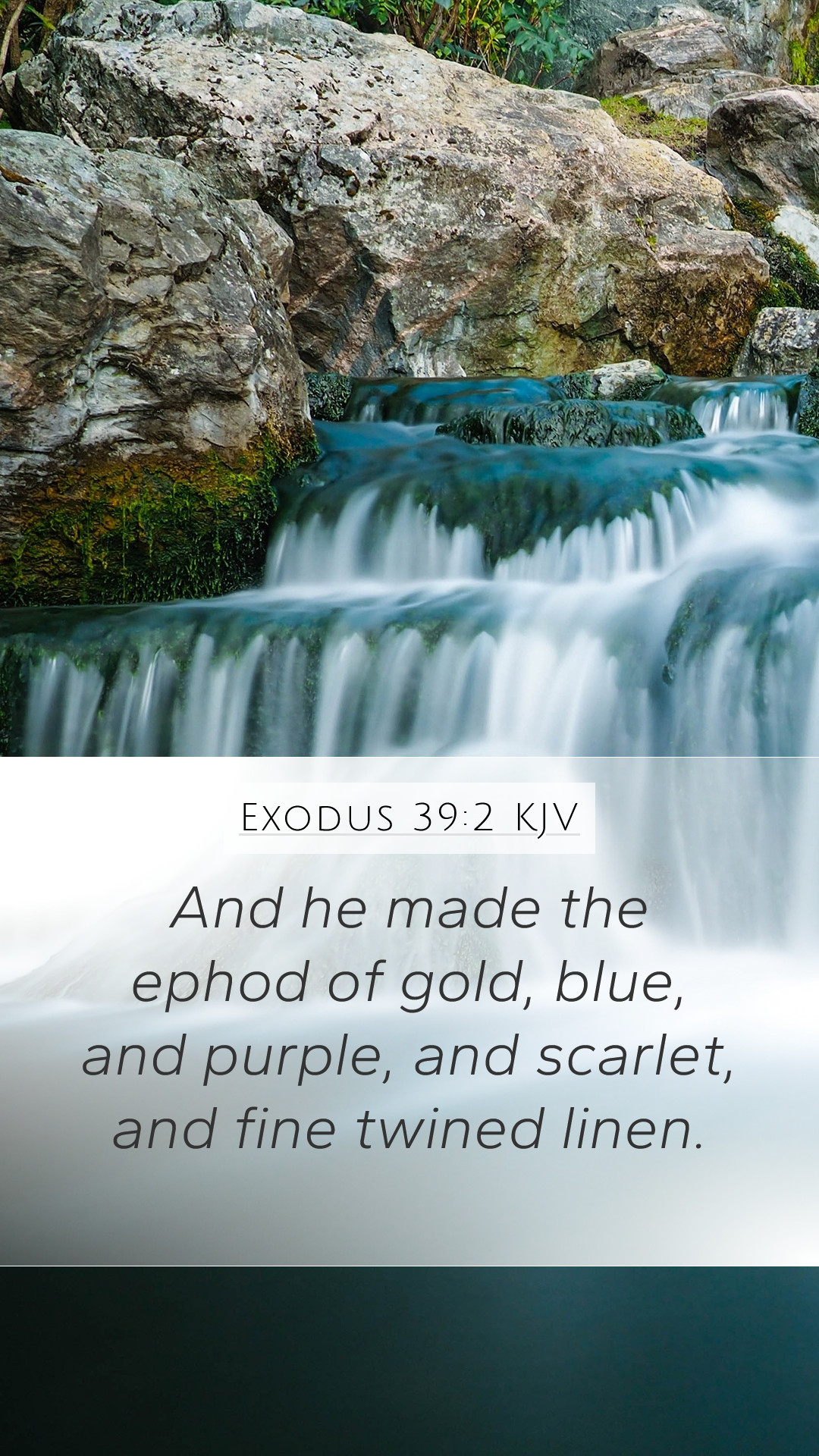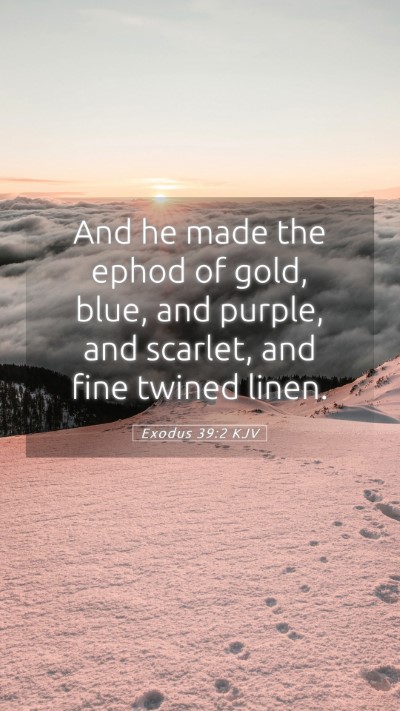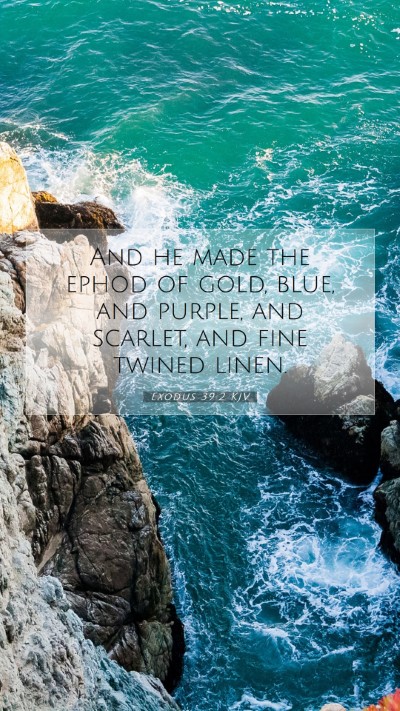Understanding Exodus 39:2
Bible Verse: Exodus 39:2
In this passage, we see a summation of God's detailed instructions regarding the construction of the tabernacle and the garments for the priests, specifically the elaboration of the robes of the high priest. This verse acts as a reminder of the sacredness and significance placed upon the attire meant for worship.
Summary of Insights from Public Domain Commentaries
-
Matthew Henry's Commentary: Henry emphasizes the meticulous attention given to the priestly garments, suggesting that the details expressed the importance of holiness and the dignity of those who serve God. The garments are not merely for show; they serve to signify the priest's role as an intermediary between God and His people. This reinforces the concept that even in our worship, we should approach with reverence and acknowledge God's guidelines.
-
Albert Barnes' Notes: Barnes highlights that this verse not only reflects the craftsmanship involved in the making of the sacred garments but also parallels the need for inner holiness among those who represent God. He suggests that such detailed instructions indicated a divine set of standards that must be adhered to, showcasing the necessity for purity in the service of worship—a principle that extends to all believers today.
-
Adam Clarke's Commentary: Clarke offers insight into the symbolic nature of the garments. He explains that each piece has meaning—pointing towards attributes such as salvation, righteousness, and glory. Clarke describes how the attire should inspire both awe and devotion, urging Christians to consider the weight of their service and the significance of their spiritual identity.
Key Themes
- Holiness and Reverence: The necessity of approaching God with holiness, as indicated by the special garments of the priests.
- Divine Instruction: God's intentional design reflects His desire for order and reverence in worship.
- Symbolism of the Garments: Each item serves as a reminder of the spiritual truths and responsibilities of representing God.
- Role of the Priest: The high priest is seen as an intermediary between God and the people, emphasizing service and sacrifice in worship.
Cross References
- Leviticus 8:6-9: The procedure of consecrating Aaron and his sons as priests.
- Exodus 28:1-4: Instructions on the garments for Aaron and his sons.
- Hebrews 5:1-4: Discussion on the high priesthood and its divine appointment.
Reflection and Application
When studying Exodus 39:2, one should evaluate what it means to serve and approach God. How does the detail of the priestly garments reflect on our personal worship practices? In what way can we apply the principle of holiness in our daily lives and interactions with others? As believers, understanding the depth behind such biblical passages can lead us to richer faith and deeper worship.
Conclusion
Exodus 39:2 provides profound insight into the importance of holiness, divine instruction, and the significance of representation when it comes to serving God. This verse encourages believers to see beyond the surface and to seek a deeper understanding of what it means to worship and to live a life that mirrors God's holiness.
Further Bible Study Resources
For those looking to delve deeper into the topics surrounding this verse, consider exploring:
- Bible study groups focused on Exodus and Levitical laws.
- Online Bible study tools that analyze the role of priests in Scripture.
- Bible study guides and lessons that discuss the imagery in the Old Testament pertaining to worship.
Keywords for Further Exploration
This analysis can help in understanding key words and concepts such as Bible verse meanings, Bible verse interpretations, and understanding difficult Bible passages. Each element of this study can enhance one's grasp of broader themes in the Bible, contributing to a richer personal and communal worship experience.


